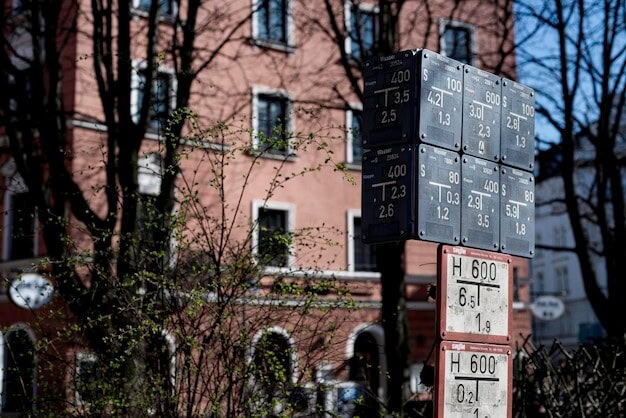
Estimated reading time: 6 minutes
Key Takeaways
- The Planning Inspectorate has formally rejected Horsham’s draft Local Plan, citing legal and environmental shortcomings.
- Housing targets are now in limbo, creating uncertainty for developers and residents alike.
- Concerns over water neutrality and inadequate cross-boundary cooperation were central to the decision.
- Horsham District Council has lodged a complaint and demanded a closer review of the inspection process.
- Major projects may face significant delays as a new plan is drafted and resubmitted.
- Stakeholders should prepare for extended consultations and a revised timeline stretching well into 2025.
Table of Contents
Introduction
“It feels as though the rug has been pulled from under us.” That was the reaction of one local councillor after learning that the Horsham District Local Plan had been rejected. Designed to steer development until 2040, the plan’s sudden collapse has sparked widespread concern over where new homes, roads and schools will now fit into an already stretched landscape.
Background of the Local Plan
The Horsham District Local Plan set out to deliver roughly 950 homes per year, bolster public transport links, and protect cherished green spaces. Crafted over several years, it attempted to balance growth with environmental stewardship, particularly through a commitment to conserve water in the Sussex North supply zone.
- Plan timeframe: 2023 – 2040
- Key aims: housing delivery, infrastructure upgrades, habitat conservation
- Central strategy: align with government targets while reflecting local need
Why Was the Plan Rejected?
The Planning Inspectorate’s letter listed four primary failings:
- Legal non-compliance: shortcomings in the plan’s evidence base and consultation process.
- Duty to Cooperate: insufficient collaboration with neighbouring authorities on cross-boundary housing numbers.
- Water neutrality: reliance on the Sussex North Offsetting Water Strategy without robust data to prove deliverability.
- Housing delivery shortfall: fears that targets could not be met under current proposals.
A detailed breakdown of the decision can be found in the Planning News report, which notes the Inspectorate’s view that the bar for cooperation had not been cleared.
Council’s Response
Horsham District Council issued a statement expressing “huge disappointment” and vowing to contest aspects of the ruling. Officials argue that:
- New technical requirements were introduced late in the examination, shifting the goalposts.
- They did engage neighbouring councils but were given inadequate credit for those efforts.
- Last-minute policy changes on water neutrality placed an unrealistic burden on evidence gathering.
In a sharp rebuke, the council has requested an independent review of the Inspectorate’s conduct, though it simultaneously pledged to work “constructively and swiftly” on a fresh plan.
Implications for Local Development
With the plan withdrawn, developers have entered a period of planning policy vacuum. Applications that relied on the now-defunct framework must either pause or be reassessed under older policies, which are often less precise and more prone to legal challenge.
- Housing sites earmarked for 5,000+ homes face delay or redesign.
- Infrastructure funding tied to those sites could stall, affecting roads, schools and healthcare provision.
- Environmental groups are urging stricter safeguards for Pulborough Brooks and other sensitive areas.
Next Steps
The council now has two broad options: amend and resubmit the current draft, or start from scratch. Either route will require:
- Fresh evidence on water neutrality, likely involving new hydrological modelling.
- A formal Statement of Common Ground with neighbouring authorities to demonstrate cooperation.
- Re-consultation with residents, businesses and environmental bodies.
Officials hint that a revised plan could reach examination in late 2025, pushing adoption into 2026 – three years behind schedule.
Conclusion
The rejection of Horsham’s Local Plan is more than a bureaucratic hiccup; it is a pivotal moment that will reshape how, where and when the district grows. While the council seeks to overturn or remedy the decision, developers, residents and environmental advocates must all navigate a landscape marked by uncertainty – yet also by an opportunity to craft a stronger, greener strategy for the future.
FAQs
Why did the Inspectorate focus so heavily on water neutrality?
Because Horsham lies within the Sussex North water-supply zone, any additional demand could harm protected habitats fed by the River Arun. The plan’s evidence was deemed too speculative to guarantee environmental compliance.
Can individual planning applications still be approved?
Yes, but they will be assessed against the older 2015 framework and national policies, making decisions slower and more prone to appeal.
Will housing targets be reduced in the next draft?
Unlikely. Government guidance still expects the original allocation unless fresh evidence of exceptional circumstances is submitted.
How long might the new consultation phase last?
Previous rounds spanned eight weeks, but the council suggests an extended 12-week period to rebuild public trust and gather more detailed feedback.
Where can residents follow ongoing updates?
The council’s planning portal will host documents, while local media such as the Planning News website offers timely analysis and commentary.

